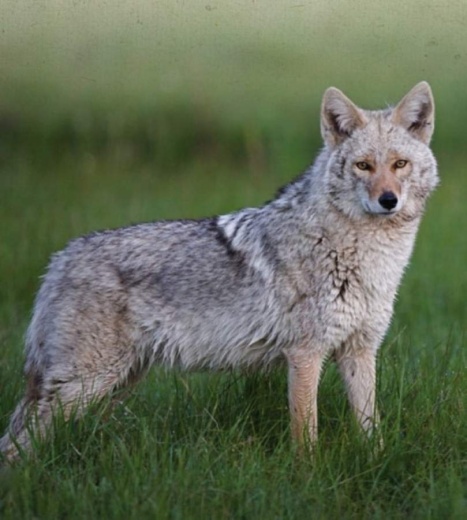As communities expand and grow, so does the likelihood of interactions with wildlife, according to information from the city of Austin. West Lake Hills, a community rich with natural spaces, has seen the occasional coyote, bobcat, owl and even mountain lion, according to Mayor Linda Anthony.
Following reports of coyote sightings along Live Oak Circle, West Lake Hills City Council members discussed how to peacefully coexist with the city's wildlife population during a virtual meeting May 13.
“The reason this item is on our agenda because I’ve received several emails from residents on Live Oak expressing concern about seeing coyotes where they previously hadn’t,” Anthony said.
In the past, the city hired an animal trapper through Travis County, who trapped one coyote in the creek behind the City Hall building on Westlake Drive, according to Anthony. An issue arose several years later questioning the effectiveness of trapping, ultimately leading the council to discontinue the practice.
At that time the city received information from a local wildlife biologist stating trapping would not deter coyotes from entering a neighborhood if that neighborhood provided food or other attractive resources. Removing a coyote from an area only allowed another alpha male to take his place, Anthony noted, saying the act of trapping a coyote is only recommended when a single animal presents a threat.
Rather than trap the coyotes, West Lake Hills is providing educational information for residents through the city of Austin. Austin’s Animal Service Department agreed to implement education and assess the neighborhood.
A brochure on coyote activity provided by Mark Sloat, administrative manager at Austin Animal Services, will be uploaded to the city’s website. Residents are also encouraged to call 311 to report concerns.
The brochure highlights necessary precautions to make neighborhoods less attractive to coyotes. According to Anthony these include minimizing bird feeders, closing compost binds, avoiding raising chickens and feeding pets indoors. Residents should also avoid leaving small pets unattended outdoors.
Coyotes, which are found mostly near greenbelts in brushy areas, are not naturally aggressive animals, according to the brochure. They are more likely to approach humans if residents decided to feed them.
Information from the city of Austin states, nationwide a third of all negative coyote encounters occurred after humans intentionally provided them food.
Coyotes are not the only predators in the area, as Anthony noted bobcats, large owls and the rare sighting of a mountain lion have been reported.
The agenda item required no action, and the information was solely for discussion purposes. Contact information for Austin Animal Services will be made available through the city’s website.





